Released in the Skype version 7.18.85.112
My team focused on the content of the Instant Messaging beyond text and how we can improve the communication shared between users.
Skype has an opportunity to provide people new reasons to connect so they can do more things together while they are actively engaging together at any scale. Leveraging additional Microsoft services will provide indispensable experiences that will allow people to express themselves, share moments, create ideas and get things done.
Often, many of the calls lead to doing things together.

We need to enhance these experiences for meeting and gatherings by offering engaging activities. We focused on the most common activities in the chat besides text. Things that people share the most.
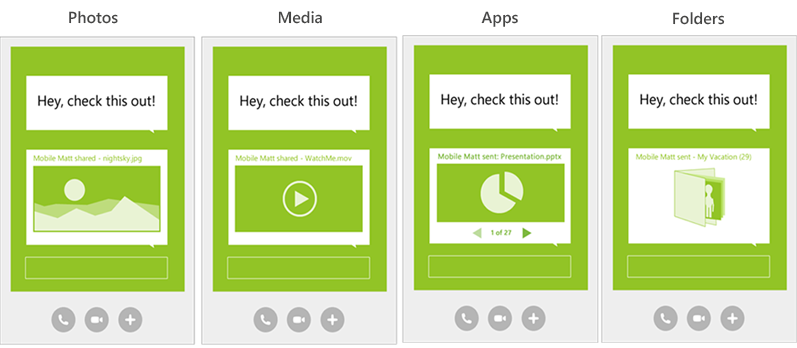
Here I will show what we did with links sharings
Released in the Skype version 7.18.85.112
Rich links
Skype users who share links in conversation want an easy way to have a quick look at the link content so they can easily find relevant link in conversation.
Imagine you are looking for a dress for a party and asking your Skype friend for an advice. You post links to the dresses you like.
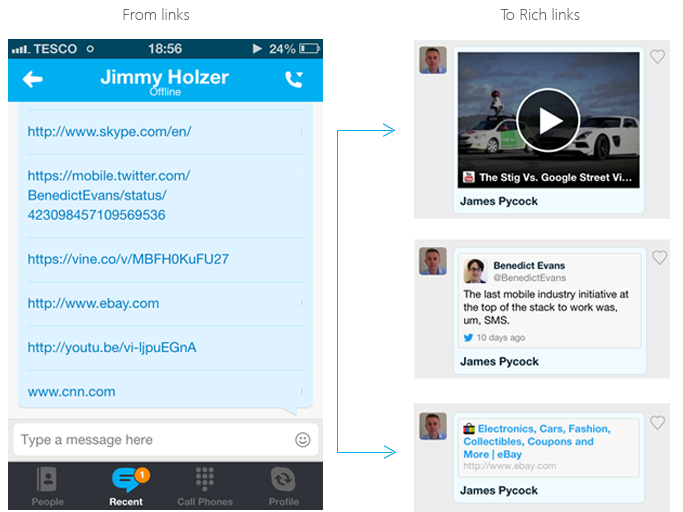
What we want to do is to help our users to:
- see what the content was before opening the link (which involves leaving the app and the conversation)
- use the rich visuals (e.g. profile pictures) to find the link again at a later time
- spend less time, when they send a link, writing descriptions so that the receiver knows what it is (URLs are designed to be machine-readable rather than self-explanatory for people)
Benchmark research extract
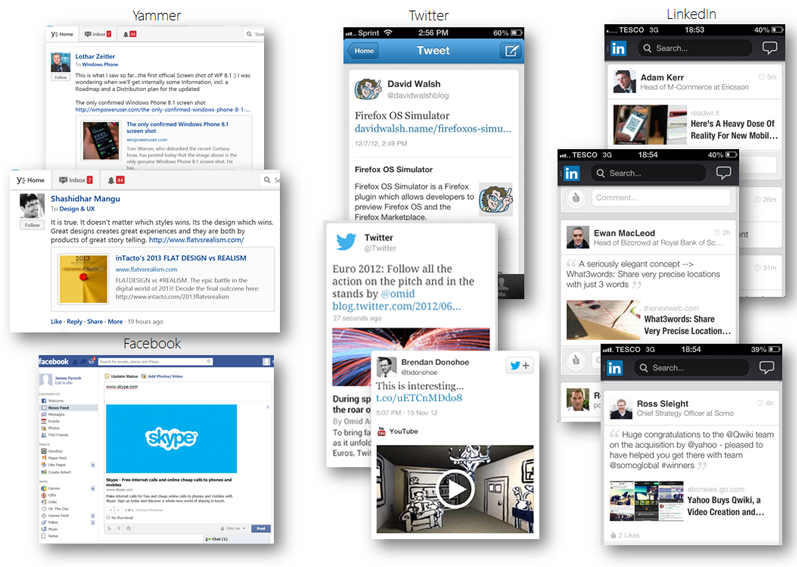
Excuse the visuals but this is the flow behind the screens
Option 1: Server side URL detection
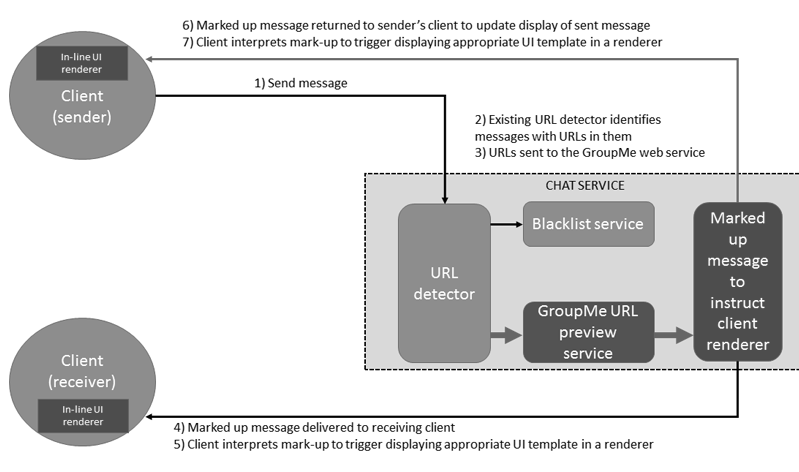
Option 2: Client-side URL detection
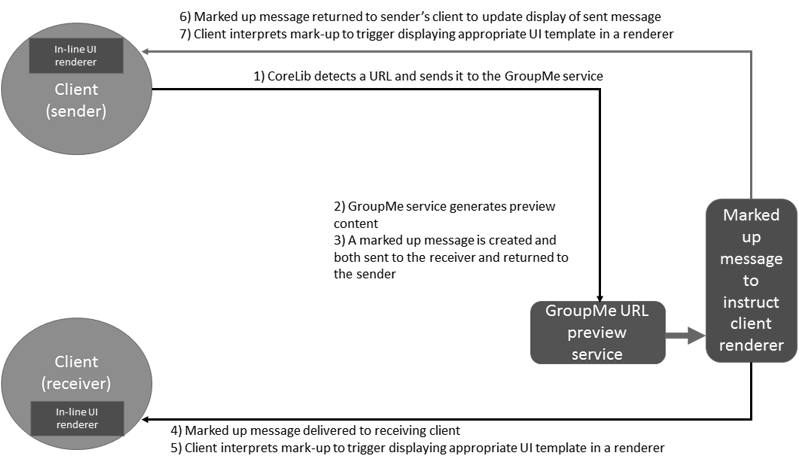
Designing for user intention
- URLs refer to many different forms of content on the web and are shared for many different reasons. Understanding these differences and designing to support them is a source of differentiators
For example, links can be shared for entertainment, to communicate news (national and international, company news, competitor news, personal news), to suggest a place to go or a film to see, to share photos on SkyDrive or Flickr, to highlight a friend’s Facebook post or tweet - The timing and context of sharing a link can change its intention.
For example, links can be related to a call and shared during the call (e.g. as something to look at together and to talk about there and then), before the call (e.g. as an agenda item to be discussed during the call) or after a call (e.g. as a follow up from something mentioned in a call that participants didn’t have time to find during the call or wasn’t worth interrupting the call for)
Links can be unrelated to a call, perhaps posted to a chat as a new topic of conversation or simply posted for the other party to look at any time. Links can be related to other shared activities outside of Skype (e.g. watching TV, attending a meeting
Links can be shared in the context of other shared links (e.g. when looking to buy something or plan a trip and sharing multiple options through multiple links pointing to the different web pages) - Intention (and context) can vary for the sender, the receiver, and even the site owner (who may be seeking to drive the distribution of their content and willing to add custom tags to their site to improve its presentation on Facebook or Twitter)
- Sharing a URL can be taken as a signal of intention, the more we can design for that the more we will enhance the experience
UX flow for Rich Links
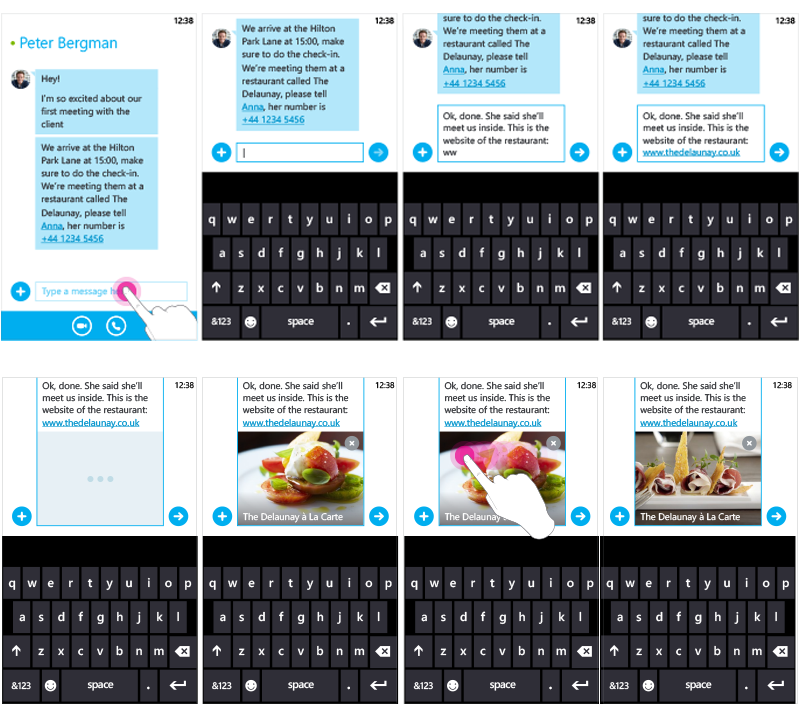
Released in the Skype version 7.18.85.112
